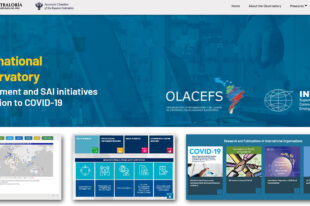by Aamir Fayyaz, Audit Director, Office of the Auditor General of Pakistan
Audit reports (financial, compliance and performance) are the main products of Supreme Audit Institutions (SAIs), each type having a different primary audience: accountants, legislators and regulators, and the public, respectively.
Performance audits are often long and complex, and the public a diverse audience who want to know if administrators are making good use of public resources in a broad range of critical areas, including the Sustainable Development Goals (SDGs), services for marginalized populations, poverty alleviation initiatives, health programs and public procurement (e.g. in the wake of the COVID-19 crisis). These factors make producing readable reports a challenging task.
However, by keeping the final product in mind (even during initial audit phases) and following guidelines, such as those detailed in this article, SAIs can produce readable reports—those enabling effective communication with citizens and contributing to discussions on critical issues.
Standard Format
Using a standard format for performance audit reports, rather than leaving the structure to the discretion of individual auditors, makes both drafting and reading the report easier and more predictable.
SAI Pakistan uses a template with headings that include organizational management, procurement, asset management, financial management, construction and works, monitoring and evaluation, etc. Under these headings, sub-sections address issues concerning efficiency, economy, effectiveness, ethics, environment, transparency and sustainability. Within each sub-section, a concise criterion leads the reader to conclusions based upon solid evidence.
Relevant Topics
More members of the public will want to read performance audit reports if a SAI selects relevant, high-impact topics of interest to the greatest number of readers. To do so, SAIs can conduct a formal risk assessment exercise as part of its strategic planning—in line with International Standards of Supreme Audit Institutions (ISSAI) 3000/89—with pre-defined risk indicators like “materiality” and “relevance of topics to SDGs.”
In 2020, for instance, topics dealing with resource mobilization and public spending in the wake of the COVID-19 Pandemic could boost public interest in audit reports and also motivate the SAI to meet expectations. Selecting trivial or outdated topics could cause readers to lose interest or dismiss the report as irrelevant to their concerns.
Guideposts for the Reader
While choosing relevant topics may prompt readers to open a performance audit report, to ensure readers thoroughly consider and digest the content, providing guideposts in the text is important, especially in navigating a paper copy of the report.
To facilitate an efficient reading experience, SAI Pakistan is currently experimenting with using message-oriented topic sentences at the beginning of sections. Reminiscent of print and electronic media headlines, they serve as a section’s executive summary, which is helpful to busy readers. Condensing a section’s main message to develop a topic sentence requires careful thought. An example comparison between a traditional heading and topic sentence:
- Traditional heading: Loss due to excess procurement amounting to 5 million rupees.
- Topic sentence: Agency spent 5 million rupees on procurement of unnecessary furniture, which remains in storage even after its facilities have opened.
Plain Language
How many times have you had to consult a dictionary while reading an audit report? Using plain language is an important skill for auditors, one that can be learned through training and practice and best exercised with confidence. There is no pride in using a difficult word when a simple one suffices. Additional key elements of plain language include short, simple sentences; action verbs; active voice; and avoiding cumbersome phrases. For example:
- Complex sentence: It was observed that the project was completed with a delay of two years, causing an extra cost of 50 million rupees to the public exchequer and wasteful unused inventory of 20 million rupees.
- Simple sentences: We found that the agency completed the project two years behind schedule. This delay resulted in an extra cost of 50 million rupees and unused inventory of 20 million rupees.
Balanced Arguments
Stakeholders expect performance audit reports to give an unbiased, balanced view. This means that, while reports must identify deficiencies, they should also mention improvements.
For example, if auditors conducting a Value-for-Money analysis find 20 percent of selected procurements were deficient with respect to economy and efficiency criteria, stating that 80 percent of selected procurements met the criteria would avoid painting an overly negative picture of the situation. Similarly, reports can acknowledge an ineffective procurement process while recognizing the process complies with relevant laws and regulations.
Avoiding subjective statements, such as “it seems,” “it appears,” and “tantamount to,” as well as derogatory terms like “fraud,” “embezzlement,” “misappropriations,” and “misuse” (unless there is irrefutable evidence to that effect), helps ensure balance.
SAIs may also have a particular vocabulary developed over time, and writing plain and balanced reports may require auditors to revise the SAI’s audit dictionary.
Final Readability Check
Before publishing a report, auditors can check its “real feel” through Microsoft Word’s readability statistics—a useful tool that analyzes documents against 10 characteristics, including two special tests:
- Flesch Reading Ease rates text on a 100-point scale; the higher the score, the greater the reading ease. A score between 60 and 70 is generally desirable; however, as audit reports often deal with complex themes, senior management can determine suitable scores for specific audit products. SAIs may also wish to set minimum acceptable scores based on variables, such as the public’s general education level and familiarity with audit products.
- Flesch-Kincaid Grade Level rates text according to U.S. school grade level. For example, a score of 7 means that a 7th-grader can understand the document. SAIs may first need to determine the equivalence of their country’s education system to U.S. grade levels to use this test. Nevertheless, the score gives a basic understanding of reader comprehension levels. Most documents should aim for a score of 7 to 8, but considering the complexity of audit subjects, higher scores may be acceptable.
Auditors confront considerable challenges—not just in assessing the performance of government entities, but in communicating complex subject matters in a clear and simple manner. The effort to produce readable reports is well worth it, and using the guidelines outlined above, coupled with professional judgment, will help ensure audit efforts reach the public with maximum impact. For more information, contact the author at aamir.paas@gmail.com.






